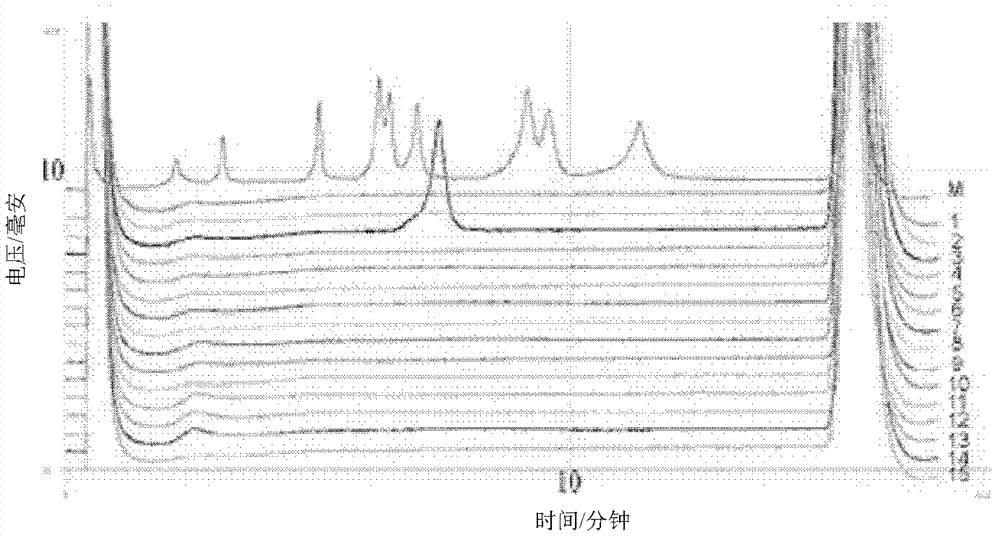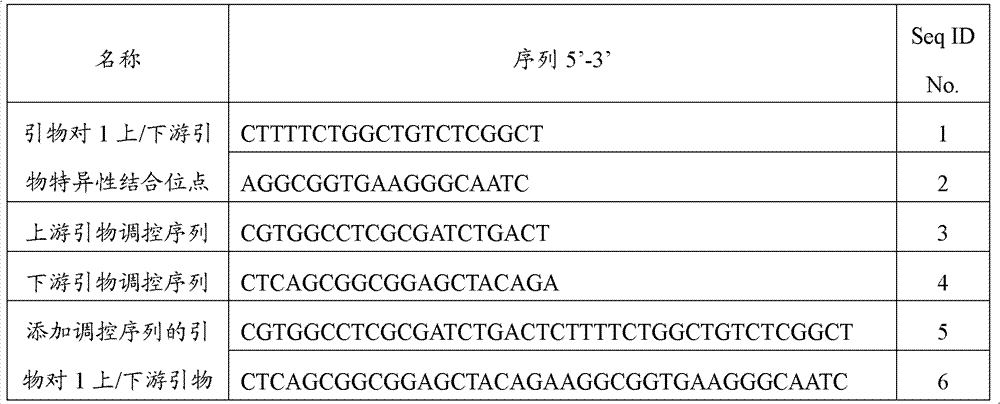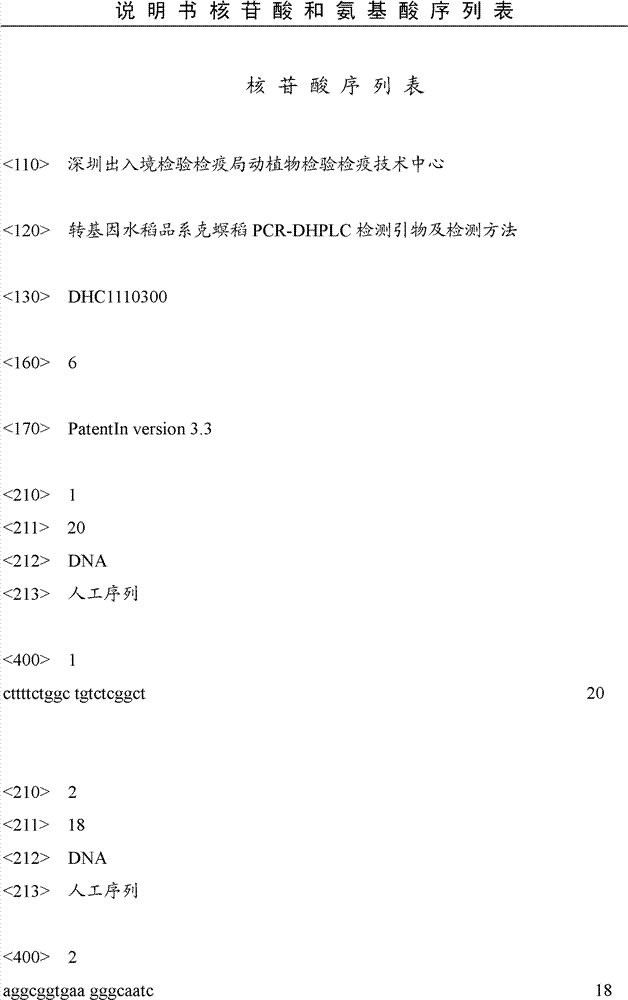PCR-DHPLC (polymerase chain reaction-denaturing high performance liquid chromatography) detection primer and detection method for genetically modified rice strain KMD
A technology of PCR-DHPLC and transgenic rice, which is applied in the direction of biochemical equipment and methods, recombinant DNA technology, microbial determination/inspection, etc., to achieve the effect of reliable detection method, good expansion performance, high sensitivity and high sensitivity
- Summary
- Abstract
- Description
- Claims
- Application Information
AI Technical Summary
Problems solved by technology
Method used
Image
Examples
Embodiment 1
[0030] Example 1 DNA Extraction
[0031] Sample DNA was extracted by CTAB method, as follows:
[0032] a) Weigh 5 g of the sample, add liquid nitrogen to the mortar and grind until the sample is a powder with a size of about 0.5 mm;
[0033] b) Weigh 300 mg of the ground sample, quickly transfer it to a 2 mL centrifuge tube, add 700 μL of CTAB extract solution preheated at 65 °C, mix well, and put it in a water bath at 65 °C for 30 min;
[0034] c) Add 5 μL RNase (10 mg / mL), and bathe in water at 37°C for 30 minutes;
[0035] d) Add an equal volume of Tris saturated phenol, mix thoroughly, and centrifuge at 12000r / min for 15min;
[0036] e) Take the supernatant, add an equal volume of chloroform / isoamyl alcohol (24:1) to mix, and centrifuge at 12000r / min for 15min;
[0037] f) Take the supernatant, add an equal volume of chloroform / isoamyl alcohol (24:1) to mix, and centrifuge at 12000r / min for 15min;
[0038]g) Add an equal volume of pre-cooled isopropanol, shake gently, ...
Embodiment 2
[0041] Example 2 DNA concentration determination
[0042] The concentration and purity of the extracted sample DNA were measured; the absorbance values at 260nm and 280nm were measured by an ultraviolet spectrophotometer, and the purity and concentration of nucleic acid were calculated respectively. The calculation formula is as follows:
[0043] DNA purity = OD260 / OD280
[0044] DNA concentration=50×OD260mg / mL
[0045] The purity ratio of DNA was between 1.7 and 1.9, and the concentration was greater than 10ng / μL.
Embodiment 3
[0046] Embodiment 3 PCR amplification
[0047] Design the binding site of the specific detection primer according to the transgenic rice line Kechi rice, and add the regulatory sequence at the 5' end of the specific detection primer binding site, synthesize the detection primer (Table 1) containing the regulatory sequence, and use the method of adding the regulatory sequence The upstream / downstream primers were used for PCR amplification, and the sample settings included: non-transgenic rice DNA, Bt63DNA, genetically modified rice line Kemodao 1DNA, genetically modified rice line Kefeng 6 DNA, MON88017DNA, genetically modified corn line Bt176DNA, genetically modified corn Bt11DNA, Corn MON863 DNA, soybean line A2704-12 DNA, soybean line A5547-12 DNA, non-transgenic canola DNA, LLcotton25 DNA, non-transgenic cotton DNA, potato EH92-527-1 DNA, and a water control.
[0048] Table 1 The detection primer binding sites and primers of the transgenic rice line Kemo rice
[0049]
...
PUM
 Login to View More
Login to View More Abstract
Description
Claims
Application Information
 Login to View More
Login to View More - R&D
- Intellectual Property
- Life Sciences
- Materials
- Tech Scout
- Unparalleled Data Quality
- Higher Quality Content
- 60% Fewer Hallucinations
Browse by: Latest US Patents, China's latest patents, Technical Efficacy Thesaurus, Application Domain, Technology Topic, Popular Technical Reports.
© 2025 PatSnap. All rights reserved.Legal|Privacy policy|Modern Slavery Act Transparency Statement|Sitemap|About US| Contact US: help@patsnap.com



